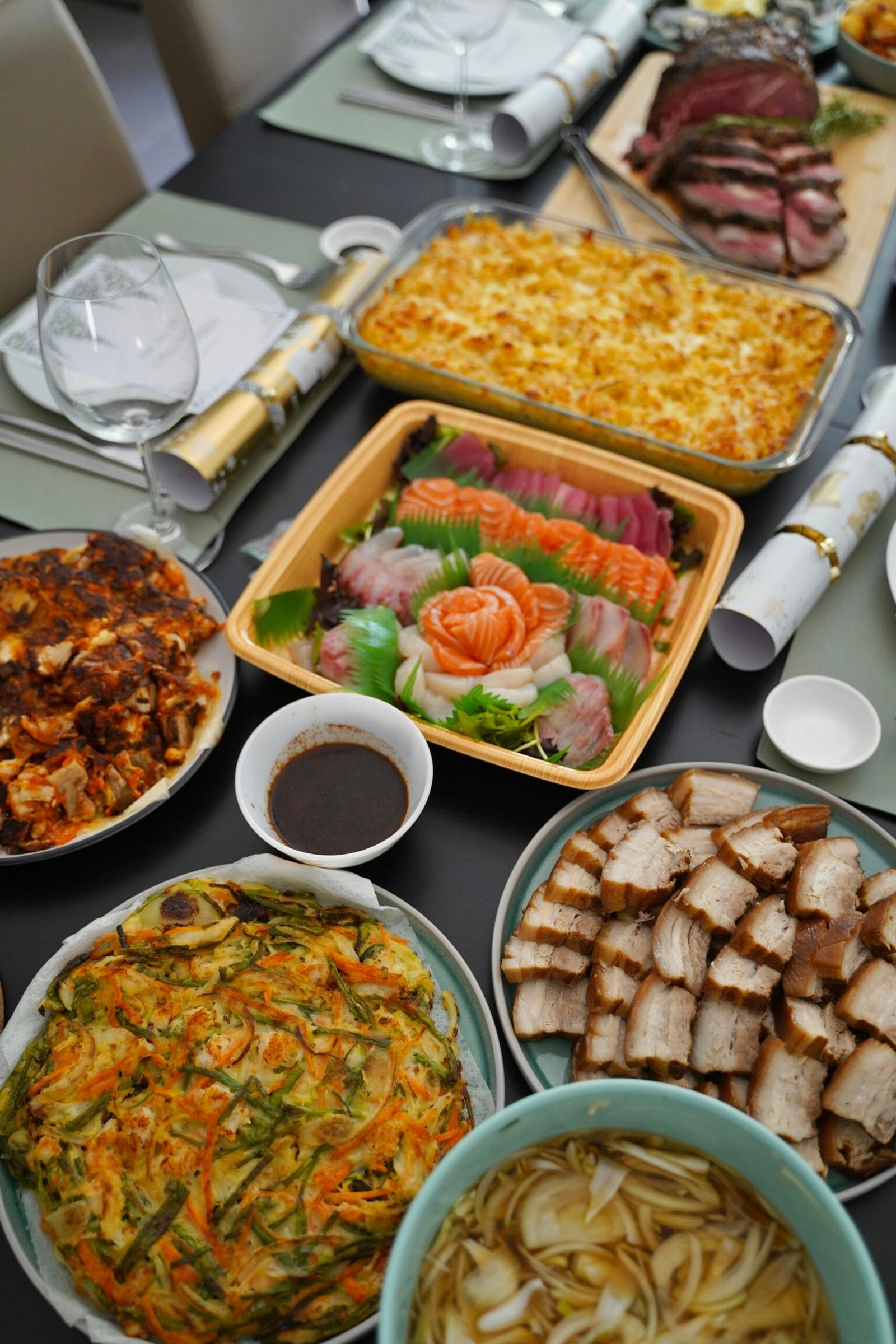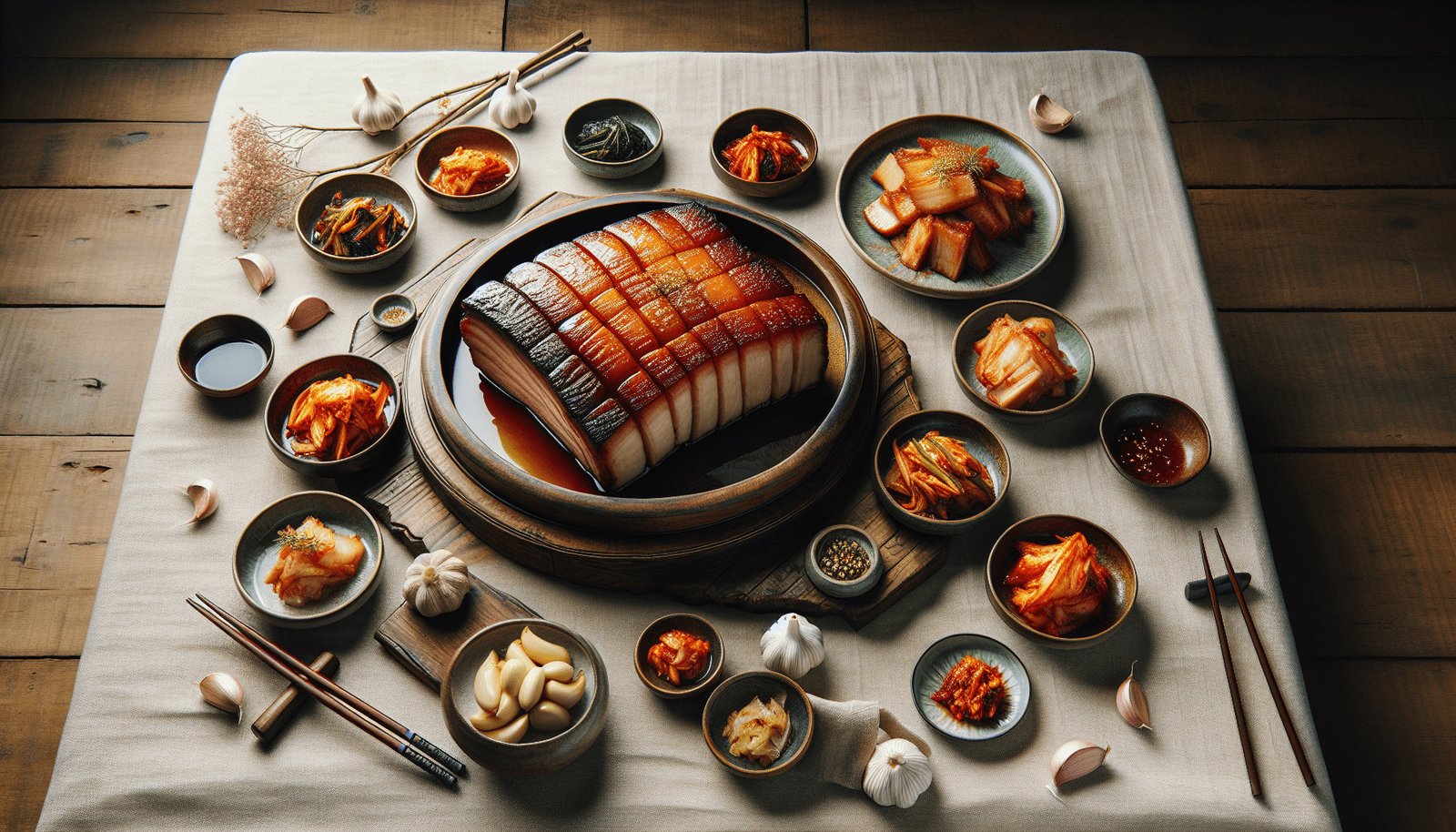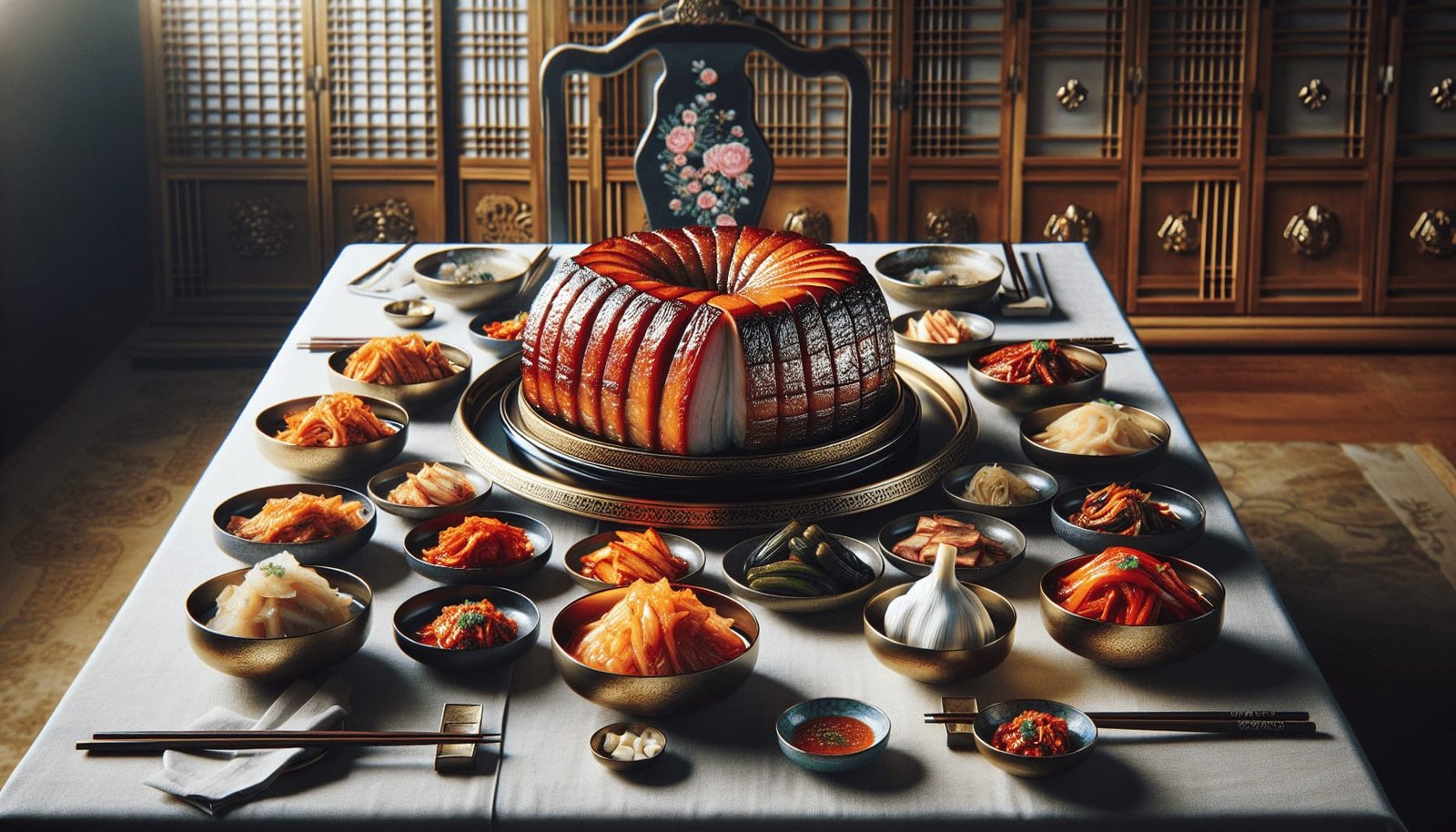Have you ever wondered how to properly prepare and serve traditional Korean steamed pork belly (bossam)? This delicious dish, rich in both flavor and history, is an integral part of Korean cuisine that many people around the world have come to love. It’s not just about preparing a meal; it’s about experiencing culture through culinary art. In this guide, you’ll discover the steps to crafting an impressive bossam from selecting the right cut of pork to setting up a perfect serving. You’ll also learn a bit about its cultural significance and why it’s more than just another pork dish. So, let’s unravel the secrets behind creating an authentic Korean dining experience that your friends and family will cherish.
Understanding Bossam: A Glimpse Into Korean Food Culture
Bossam is a treasured Korean dish well-loved for its tender and moist texture, complemented by an array of flavorful accompaniments. It’s typically made from pork belly, braised until perfectly tender. This dish holds a special niche in Korean culinary tradition, often served during celebrations or communal gatherings. In Korea, meals are often seen as a communal activity, and bossam exemplifies this through its shared dining experience. Understanding the essence of this dish will help you appreciate not only its taste but its role in fostering community and togetherness.
The Cultural Significance of Bossam
Bossam is more than just a meal; it represents Korean hospitality and culinary mastery. This dish is historically prepared during kimjang, the traditional practice of making large quantities of kimchi in preparation for the winter. Sharing bossam with fresh kimchi created a festive atmosphere. Preparing bossam at home gives you a glimpse into these cherished moments of Korean life. Embracing this dish means embracing a spirit of sharing and warmth inherent in Korean culture.
Choosing the Right Ingredients
Every great dish starts with quality ingredients, and bossam is no exception. Selecting the right pork and understanding the essential components ensure that the final product is as authentic as possible.
Selecting the Pork Belly
The foundation of bossam is the pork belly, which needs to be fatty yet meaty for the dish’s signature melt-in-your-mouth quality. When choosing pork belly, look for:
- Marbling: A good balance of fat and meat will provide the best flavor and texture.
- Thickness: Thick cuts help in retaining moisture and are perfect for slow cooking.
- Freshness: Fresh pork will have a mild scent and firm texture.
Complementary Ingredients
In addition to pork belly, bossam is served with an array of sides and condiments that enhance the flavor profile. Here are some key ingredients:
- Ssambap (Wrap Vegetables): Leafy lettuce, perilla leaves, and napa cabbage are commonly used for wrapping the pork.
- Ssamjang (Dipping Sauce): A mix of doenjang (soybean paste) and gochujang (red chili paste) with garlic and sesame oil.
- Kimchi: Fresh, fermented cabbage or radish kimchi adds a spicy, tangy flavor.
- Garlic and Ginger: Used in the braising process to infuse the pork with deep flavors.
- Seasonings: Soy sauce, sugar, and rice wine are staples for seasoning the broth.

Preparing Your Kitchen and Tools
Before jumping into cooking, make sure you have all necessary equipment, which can make the process smooth and enjoyable.
Essential Tools
Having the right tools at your disposal streamlines the cooking process. Here are some essentials:
- Large Pot or Steamer: Necessary for steaming or braising the pork belly.
- Sharp Knife: For slicing the pork and vegetables neatly.
- Tongs: Useful for handling hot food during cooking and serving.
- Serving Platter: To beautifully present the pork belly alongside side dishes.
Cooking Techniques: Step-by-Step Guide
Cooking bossam is an art that involves some fundamental techniques aimed at achieving the best flavor and texture. This section guides you through each step in preparing bossam at home.
Preparing the Pork Belly
Before cooking, a few preparatory actions are crucial.
- Rinse and Dry: Rinse the pork belly under cold water to remove any impurities. Pat it dry with paper towels to ensure even cooking.
- Scoring: Lightly score the fat side of the pork belly to help the seasoning penetrate deeply.
Marinating and Seasoning
While bossam doesn’t require a traditional marinade, prepping it with seasonings enriches the flavor.
- Rub the pork belly with garlic, salt, and a pinch of sugar to enhance its natural taste.
- Consider incorporating Korean rice wine (cheongju) to tenderize the meat and remove any pork scent.
Braising the Pork Belly
Braising ensures that the pork belly becomes tender and flavorful. Follow these steps:
- Create a Flavorful Broth: In a large pot, combine water, soy sauce, garlic, ginger, and a few slices of onion.
- Add Pork Belly: Submerge the pork belly in the broth, skin side up.
- Simmer: Bring the broth to a boil. Then, reduce the heat and let it gently simmer for about 2 hours. The pork should become tender to the touch.
- Check Occasionally: Ensure the pork remains submerged and add water if necessary.

Creating Delicious Accompaniments
While the pork belly is the star, the supporting cast of sides and sauces makes bossam delightful.
Making Ssamjang
A crucial element of bossam is ssamjang, the dipping sauce that adds a rich, savory kick.
- Mix Ingredients: Combine 2 tablespoons of doenjang, 1 tablespoon of gochujang, minced garlic, and a splash of sesame oil.
- Adjust to Taste: Add a pinch of sugar or honey for sweetness, depending on your preference.
- Texture: For a creamier texture, stir in finely chopped onions or green chilies.
Preparing Wraps
Wraps allow diners to enjoy an interactive eating experience. Here’s how to prepare them:
- Rinse and Dry: Wash and dry lettuce, perilla leaves, and napa cabbage thoroughly.
- Trim: Cut large leaves into manageable pieces for easy wrapping.
Kimchi: The Perfect Pairing
Bossam and kimchi are a match made in culinary heaven. Whether you opt for home-made or store-bought, ensure it is served fresh to complement the rich pork.
Bringing It All Together: The Art of Serving
Once everything is prepared, assembling the dish for serving is a delightful process that lends itself to creativity and presentation.
Plating the Pork
Arrange the pork belly slices neatly on a serving platter. Typically, the slices are cut about an inch thick to ensure a satisfying bite.
Accompanying the Pork
Arrange the side dishes strategically around the pork. Place ssambap (wrap vegetables) on one side and bowls of ssamjang, kimchi, and garlic slices on another to offer a full spectrum of taste in each wrap.
Serving Drinks
Pairing the right drink enhances the dining experience. Often, soju—a popular Korean spirit or makgeolli—a sweet rice wine, complement bossam’s flavors.

The Joy of Eating Bossam
Eating bossam is both a culinary and social experience. Here are some tips to fully enjoy it.
How to Eat Bossam
- Start with a Wrap: Layer a piece of pork belly on a leaf, add a dash of ssamjang, and top with a piece of kimchi.
- Roll and Enjoy: Gently roll or fold the leaf over its fillings and take a hearty bite.
- Sip and Savor: Follow each bite with a sip of your chosen drink for a delightful taste sensation.
Sharing the Experience
Remember, bossam is best enjoyed with company. The dish encourages sharing, laughter, and conversation, embodying the Korean spirit of hospitality perfectly.
Conclusion: Embrace the Tradition
Preparing and serving bossam isn’t just about the act of cooking. It’s about embracing a tradition that brings people together and celebrates communal dining. You now have the knowledge to recreate this delightful experience at home, share it with your loved ones, and perhaps create new cherished memories just as Koreans have done for generations. So, gather your ingredients, and immerse yourself in crafting an authentic bossam meal that can transport you to the heart of Korean culture and cuisine.
